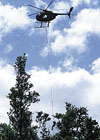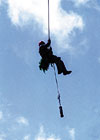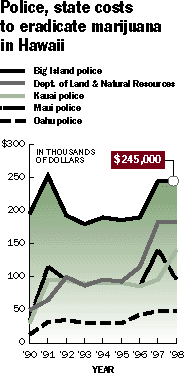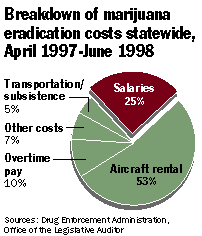"Look at the correlation between the suppression of marijuana and the increased use of 'ice.' It seems to me there's an undeniable correlation. When Green Harvest began, that's precisely when the use of ice began." Donald M. Topping, president of the Drug Policy Forum of Hawaii and former director of the Social Science Research Institute at the University of Hawaii
"Boy Scouts couldn't go up and do hikes because they would run into booby traps, or growers would threaten them. It's gotten better ... We cut down on the export crop quite a bit so people weren't selling Maui Wowee all over the West Coast of the Mainland. At the same time, you'd have a hard time finding people either on the Neighbor Islands or Oahu that can't get marijuana." U.S. Attorney Steve Alm
"The students who get into heavy use eventually stop coming to school and don't get a diploma and just fade away. It's that mentality of hanging out at the beach and drinking and smoking pot and not living up to their potential." Phil Geraci, Hilo High School counselor
"The irony is that in the last 20 years of increased drug penalties and increased drug enforcement, the price of marijuana has gone up significantly." Steven Wishnia, senior editor at High Times Magazine, a 200,000-circulation magazine devoted to the marijuana culture |
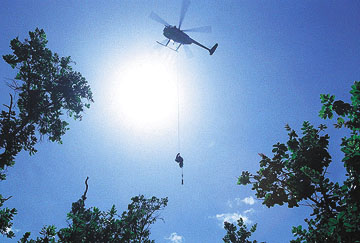 A Big Island officer rises out of the Puna landscape with marijuana plants strapped between his legs. It's the latest technique for police in a game of changing tactics between law enforcement agents and marijuana growers.
The war began on the Big Island as a clandestine police operation called Green Harvest. In the years since, battles have spread throughout the Islands and shaped both politics and police work.
Growers lost homes, went to jail, died in drug disputes. Police officers arrested friends and family and were targeted by crude booby traps. Caught in the middle were angry noncombatants, people in remote places such as the Puna District who grew weary of police helicopters ruining their peace. Even as police hacked and buried millions of plants, marijuana wove itself into the fabric of life in the Islands. Pakalolo continues to fuel an underground economy where it is the currency for everything from car repairs to baby-sitting.
No one knows how much the war on marijuana has cost, the manpower consumed, the volume of plants seized or the number of dealers put out of business. Some Hawaii law enforcement officials said they probably have the information but don’t have the personnel to compile it. Others said it would be impossible to comply with The Advertiser’s request for an overall estimate of the costs because agencies keep records differently. The data that various agencies can provide hint at the enormous size of the marijuana industry. In 1998, Hawaii’s marijuana campaign seized 772,401 plants, more than any other state’s marijuana program. In 1997, the National Organization for the Reform of Marijuana Laws estimated that Hawaii’s pakalolo industry produced 250,000 pounds, ranking it fifth in the country, behind California, Tennessee, Kentucky and Florida. Tom Kelly, assistant special agent in charge of the Drug Enforcement Administration’s Honolulu district office, said it’s impossible to estimate the size of Hawaii’s marijuana industry. He won’t guess how much comes in and how much is shipped out each year by plane, boat and mail. “There’s no way for me to know out of 100,000-plus plants that are eradicated, how many more weren’t eradicated, and how many went to Guam or the Philippines or California,” Kelly said. “If we knew where they were going there, we’d have stopped them.”
A review by the DEA’s audit division concluded in 1995 that: “Presently, analysis of the effectiveness of marijuana eradication efforts in Hawaii County — or any other jurisdiction — is hindered by a lack of reliable data about the extent of illicit cultivation.” The alternative — putting an end to the marijuana campaign — is unthinkable to Carvalho and other law enforcement officials. Allowing marijuana growers to operate unchecked would send the Big Island back to the dark days of the 1970s, he said, when hunters and hikers were confronted by growers carrying shotguns and rifles. Drug dealers killed one another. And utility company linemen were shot at — just because they had a view of marijuana fields. “People say marijuana is a victimless crime,” Carvalho said. “We had homicides. A lot of people forget about that. Once we let up or slow down, it’s just a question of time when we’ll have a major problem again.” Even today, a Big Island bulldozer operator who clears the old sugar cane fields tries to accommodate marijuana growers when he comes across their plants. He methodically grooms the area while leaving the marijuana alone. It’s his way of letting the growers know that someone is in the area without hurting their business. Still, he can’t avoid trouble. Eight of his bulldozer engines have been destroyed when people poured sand into the engines. “You fire it up and aloha, it’s gone,” he said. “I don’t want to get involved,” said the operator, who did not want his name used out of fear of retaliation from growers. “Guaranteed, I don’t want problems. I don’t know why they do this.” Judith Mura’s problem isn’t with the growers. It’s with the campaign to stop them. The eradication helicopters have flown so low over Mura’s house in Puna Palisades that they rattle the roof and walls, she said. The noise sometimes gives Mura’s 5-year-old daughter, Jordan, nightmares. “They call it a war on drugs,” Mura said, as Jordan bounced on a trampoline in their front yard. “This is a war on our own people. How can the United States of America declare war on its own citizens?”
|
|||||||||||||||||||||||||||||||||||||||||||||||||||||
